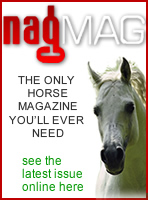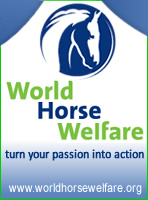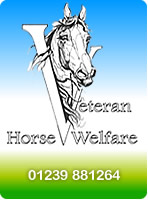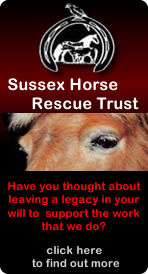
Horseytalk.net Special Interview
British Equine Veterinary Association
Equine dental healthcare Guidance
Who can do what.
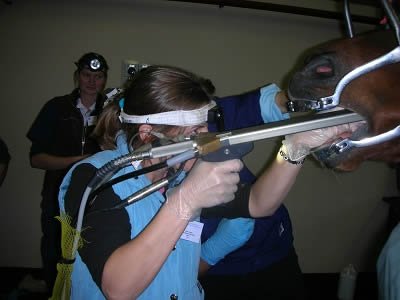 The British Equine Veterinary Association (BEVA) has issued guidance to horse owners to help them understand the rules surrounding equine dental care.
The British Equine Veterinary Association (BEVA) has issued guidance to horse owners to help them understand the rules surrounding equine dental care.
Type "equine dentist" into any internet search engine and you are likely to get a plethora of information and a wide range of horse dental care providers. Despite this vast array of accessible material there is still misunderstanding amongst horse owners over who can do what in a horse's mouth.
To help protect the health and safety of horses and the legal status of those all involved, the British Equine Veterinary Association (BEVA) has a section devoted to equine dental care on their website including a document on current regulations for dental procedures.
It's important for horse owners to recognise that alldiagnostic and treatment procedures in the horse's mouth (i.e. recognising and rectifying abnormalities) are Acts of Veterinary Surgery under the Veterinary Surgeons Act 1966.
The removal of small dental overgrowths and sharp enamel points with hand rasps is considered to be routine care rather than diagnosis/treatment and can legally be carried out by anyone.
However there are some procedures that, despite being Acts of Veterinary Surgery under the law, may be delegated safely to "suitably qualified" Equine Dental Technicians (EDT) without compromising the horse's welfare and safety.
These procedures (termed Category 2 procedures) are as follows:
- Examination, evaluation and recording of dental abnormalities
- The removal of loose teeth or dental fragments with negligible periodontal attachments
- The removal of erupted, non-displaced wolf teeth in the upper or lower jaw under direct and continuous veterinary supervision
- Palliative rasping of fractured and adjacent teeth
- The use of motorised dental instruments where these are used to reduce overgrowths and remove sharp enamel points only. Horses should be sedated unless it is deemed safe to undertake any proposed procedure without sedation, with full informed consent of the owner.
Suitably qualified EDTs are those who have a "Defra approved" qualification – having either passed the rigorous BEVA/BVDA examination or the Worldwide Association of Equine Dentistry (WWAED) examination. No other qualifications are currently recognised by the UK authorities.
Vicki Nicholls, equine vet at Wright and Morten in Cheshire, chair of BEVA Council's Paraprofessional Committee and member of the British Association of Equine Dental Technicians (BAEDT) said:
"It's scary that so many horse owners don't recognise the health, welfare and legal risks they are taking if they don't know the status of the person carrying out dental procedures on their horse; getting it wrong might not only result in pain and poor performance for the horse but could also put the owner on the wrong side of the law."
BEVA recommends that, if you are a horse owner, you should safeguard your horse (and yourself) by:
- Asking your dental care provider whether or not they have passed the BEVA/BVDA exam or the WWAED exam (or checking online that they are full members of the BAEDT or WWAED).
- Asking your dental care provider whether or not they are allowed to do whatever needs doing in your horse's mouth (and checking with your vet if in doubt)
- Asking what continuing dental education your dental care provider has done in the last couple of years.
- Checking that your dental care provider has third party and professional indemnity insurance in case anything goes wrong.
The number of vets taking the BEVA/BVDA exam in equine dentistry has increased in recent years with about 15% of those who have passed the exam being vets.
This is indicative of the growing awareness, amongst owners and vets, of the importance of dental health. Recently both certificate and diploma level post-graduate qualifications in equine dentistry have become available for veterinary surgeons with increasing numbers enrolling and achieving these very high level specialist qualifications.
Category 1 Procedures
The procedures that an individual can perform after recognised training without specific attainment of qualifications.
- Examination of teeth
- Removal of sharp enamel points using manual rasps only
- Removal of small dental overgrowths (maximum 4mm reductions) using manual rasps only
- Rostral profiling of the first cheek teeth (maximum 4mm reductions), previously termed 'bit seat shaping'
- Removal of loose deciduous caps
- Removal of supragingival calculus.
Category 2 Procedures
Additional procedures suitable for delegation to an EDT who has trained and passed an examination approved by DEFRA:
- Examination, evaluation and recording of dental abnormalities
- The removal of loose teeth or dental fragments with negligible periodontal attachments
- The removal of erupted, non-displaced wolf teeth in the upper or lower jaw under direct and continuous veterinary supervision
- Palliative rasping of fractured and adjacent teeth
- The use of motorised dental instruments where these are used to reduce overgrowths and remove sharp enamel points only. Horses should be sedated unless it is deemed safe to undertake any proposed procedure without sedation, with full informed consent of the owner.
Category 3 procedures
All other procedures and any new procedures, which arise as a result of scientific and technical development, would by default fall into category 3, which are those procedures restricted to qualified veterinary surgeons and are not proposed for deregulation. It is therefore NOT legal for these to be performed by non-veterinarians.
